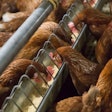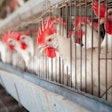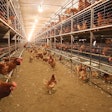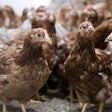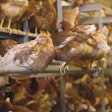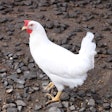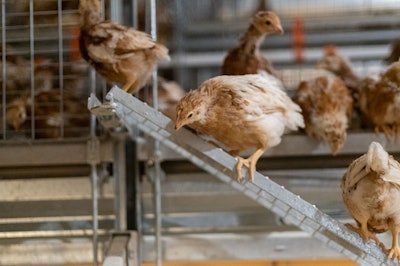
Cage-free pullets appear to be unaffected by stressors including stocking density and feeder space, according to research conducted by Purdue University.
Because the environment that a pullet lives in can have lasting impacts on the behavior, welfare, health and productivity of the bird as an adult, the findings are applicable to the real world, explained Meagan Abraham DVM, Purdue University PhD candidate.
There is currently limited information, including stocking guidelines, to guide management during the pullet phase.
“This research shows that cage-free rearing practices producers are currently using seem to be effective. The pullets thrived and were resilient, despite the factors we tried to stress them with,” Abraham said.
“The results show that there is a wide range of resource space allocations the industry can provide successfully within a cage-free system. For now, we do not know what long term effects are, but during the pullet phase, the birds did well.”
The research
The objective of the project was to develop outcome-based (animal-based) welfare measures, which can provide insight into how the bird is feeling and how she is responding to her environment, for pullets reared at different densities in a research setting.
Two studies were performed using external stressors, which were applied to white and brown strains of Lohmann pullets. The animal-based welfare parameters measured bird appearance through feather coverage, foot condition and keel condition. Body weight, uniformity, feed consumption and feed conversion ratio (FCR) were also evaluated.
In the first of two studies, the strains were housed at high (670 cm2/bird) and low stocking densities (1,352 cm2/bird). The lower stocking density increased overall bursal weight and revealed an improved FCR. The brown strain saw less body weight uniformity and worse feather coverage in the higher stocking density. The white strain saw better uniformity and feather coverage, but a worse FCR in the higher stocking density.
The second study used the same two strains with two different feeder spaces and three stocking densities - high (154.45 cm2/bird), medium (518.76 cm2/bird) and low (1,247.38 cm2/bird). The study revealed that the high stocking density was associated with poorer feather condition and improved FCR. The reduced feeder space was associated with increased FCR and a lower presence of antibodies, which control infections.








